PC Chairs’ Preface
General Chairs’ Preface
Organization
Contents – Part I
Contents – Part II
Classification
Joint Classification with Heterogeneous Labels Using Random Walk with Dynamic Label Propagation
1 Introduction
2 Related Works
2.1 Traditional Classification and Joint Classification
2.2 The Construction of MRG
3 Random Walk with Dynamic Label Propagation on MRG
4 Experiment and Result
4.1 Data Set
4.2 Compared Methods
4.3 Performance Comparison
5 Conclusions
References
Hybrid Sampling with Bagging for Class Imbalance Learning
1 Introduction
2 Related Work
3 The Proposed Method
4 Experiments
4.1 Experiment 1: Sampling Rate Verification
4.2 Experiment 2: Comparative Studies
4.3 Experiment 3: Sampling Rate Comparison
4.4 Experiment 4: Parameter Selection
5 Conclusion
References
Sparse Adaptive Multi-hyperplane Machine
1 Introduction
2 Preliminary
3 Related Work
3.1 Multi-class SVM
3.2 Multi-hyperplane Machine
3.3 Adaptive Multi-hyperplane Machine
4 Sparse Adaptive Multi-hyperplane Machine (SAMM)
4.1 Optimization Problem
4.2 Optimization Solution
4.3 Generalization Error of SAMM
5 Experiments
5.1 Experimental Settings
5.2 Evaluation on Accuracy and Time of the Proposed Method
5.3 Tuning the Sparsity and Its Influence on Performance
6 Conclusion
7 Technical Lemmas
References
Exploring Heterogeneous Product Networks for Discovering Collective Marketing Hyping Behavior
1 Introduction
2 Related Work
3 Methodology
3.1 Product Network Regularization
3.2 The Learning Algorithm
4 Experiments
4.1 Human Evaluation
4.2 Benchmark Methods
4.3 Experimental Results
4.4 Application: A Case Study
5 Conclusions
References
Optimal Training and Efficient Model Selection for Parameterized Large Margin Learning
1 Introduction
2 Large Margin Learning with Multiple Parameters
3 Deriving the Explicit Dependence
4 PDGDP for Training: Global Optimality Guarantee
5 PDGDP Based Model Selection Algorithm
6 Experimental Results
6.1 PDGDP Training Results
6.2 PDGDP Model Selection Results
7 Conclusion and Future Work
References
Locally Weighted Ensemble Learning for Regression
1 Introduction
2 Related Work
2.1 Constant Weighted Ensemble
2.2 Dynamic Weighted Ensemble
3 Locally Weighted Ensemble Learning
3.1 Objective Function of Locally Weighted Ensemble Learning
3.2 Optimization of Locally Weighted Ensemble Learning
3.3 Algorithm of Locally Weighted Ensemble Learning
4 Experiments and Analysis
4.1 Convergence of Objective Function
4.2 Prediction on UCI Datasets
5 Conclusion
References
Reliable Confidence Predictions Using Conformal Prediction
1 Introduction
2 Inductive Conformal Classification
3 Conformal Classifier Errors
3.1 Class-Conditional Conformal Classification
3.2 Utilizing Posterior Information
4 Experiments
5 Concluding Remarks
References
Grade Prediction with Course and Student Specific Models
1 Introduction
2 Definitions and Notations
3 Methods
3.1 Course-Specific Regression (CSR)
3.2 Student-Specific Regression (SSR)
3.3 Methods Based on Matrix Factorization
4 Experimental Design
4.1 Dataset
4.2 Competing Methods
4.3 Parameters and Model Selection
4.4 Evaluation Methodology and Performance Metrics
5 Experimental Results
5.1 Course-Specific Regression
5.2 Student-Specific Regression
5.3 Methods Based on Matrix Factorization
5.4 Comparison with other methods
6 Conclusions
References
Flexible Transfer Learning Framework for Bayesian Optimisation
1 Introduction
2 Preliminaries
2.1 Gaussian Process
2.2 Bayesian Optimisation
3 Proposed Method
4 Experiments
4.1 Experimental Setup
4.2 Experiment with Synthetic Data
4.3 Experiment with Real World Datasets
5 Conclusion
References
A Simple Unlearning Framework for Online Learning Under Concept Drifts
1 Introduction
2 Preliminaries
3 Unlearning Framework
3.1 Unlearning Test
3.2 Instance for Unlearning Test
4 Empirical Evaluation
4.1 Results and Discussion
5 Conclusion
References
User-Guided Large Attributed Graph Clustering with Multiple Sparse Annotations
1 Introduction
2 Related Work
3 Method CGMA
3.1 Framework
3.2 Complexity Analysis
4 Experiments
5 Conclusions
References
Early-Stage Event Prediction for Longitudinal Data
1 Introduction
2 Related Work
3 Preliminaries
3.1 Problem Formulation
3.2 Naive Bayes Method
3.3 Tree-Augmented Naive Bayes Method
4 The Proposed ESP Framework
4.1 Prior Probability Extrapolation
4.2 The ESP Algorithm
5 Experimental Results
5.1 Dataset Description
5.2 Performance Evaluation
5.3 Results and Discussion
6 Conclusion
References
Toxicity Prediction in Cancer Using Multiple Instance Learning in a Multi-task Framework
1 Introduction
2 Related Work and Background Knowledge
2.1 Toxicity Prediction
2.2 The Multi-instance Learning
2.3 Multi-task Learning Using Nonparametric Factor Analysis
3 The Proposed Framework
3.1 Model Description
3.2 Model Inference
4 Experiments
4.1 Synthetic Data
4.2 Real Data Description
4.3 Experiment Setting and Results
5 Conclusion
References
Shot Boundary Detection Using Multi-instance Incremental and Decremental One-Class Support Vector Machine
1 Introduction
2 Computational Framework
2.1 Overview
2.2 Feature Extraction
2.3 OCSVM
2.4 MID-OCSVM
2.5 OCSVM Divergence
3 Experimental Results
3.1 Setup
3.2 Performance Evaluation
4 Conclusion and Future Work
References
Will I Win Your Favor? Predicting the Success of Altruistic Requests
1 Introduction
2 Dataset and Features
2.1 Data
2.2 Features
3 The Proposed GPRS Model
3.1 Constructing Request Graph
3.2 Propagation-Based Optimization
4 Evaluation
5 Conclusion
References
Feature Extraction and Pattern Mining
Unsupervised and Semi-supervised Dimensionality Reduction with Self-Organizing Incremental Neural Network and Graph Similarity Constraints
1 Introduction
2 Preliminaries
2.1 Linear Dimensionality Reduction
2.2 The Single Layered SOINN
3 Dimensionality Reduction with Semi-supervised SOINN
3.1 Problem Formation and Algorithm Framework
3.2 Semi-supervised Extension to the Single Layered SOINN
4 Experiments
4.1 Artificial Datasets
4.2 The Intrusion Detection Dataset
5 Conclusions and Future Works
References
Cross-View Feature Hashing for Image Retrieval
1 Introduction
2 Problem Formulation
3 Preliminary and A Baseline Approach
3.1 Canonical Correlation Analysis
3.2 Spectral Hashing
3.3 CCA+SH Baseline Algorithm
4 CVFH: Cross-View Feature Hashing
4.1 Objective
4.2 ``Bi-Partition and Match'' Strategy
4.3 Hash Functions
4.4 CVFH Algorithm
5 Experiments
5.1 Results on Toy Data
5.2 Results on NUS-WIDE-LITE Image Data
6 Conclusion and Future Work
References
Towards Automatic Generation of Metafeatures
1 Introduction
2 Metalearning
3 Systematic Generation of Metafeatures
3.1 Decomposing Metafeatures
4 Experiments
4.1 Experimental Setup
4.2 Systematized vs Unsystematized
4.3 Systematized vs State-of-the-art
5 Conclusion and Future Work
References
Hash Learning with Convolutional Neural Networks for Semantic Based Image Retrieval
1 Introduction
2 Related Work
3 Methodology
3.1 Hash Layer
3.2 Hinge Softmax Loss
3.3 The Model
3.4 Hash Codes
4 Experiments
4.1 Experimental Settings
4.2 CIFAR-10
4.3 SVHN
5 Discussion
6 Conclusion
References
Bayesian Group Feature Selection for Support Vector Learning Machines
1 Introduction
2 Related Work
3 Bayesian GFS for SVL Machines
3.1 Group Sparse Model
3.2 The Proposed Framework
3.3 Computational Complexity
4 Experiments
4.1 Regression
4.2 Classification
5 Conclusion
References
Active Distance-Based Clustering Using K-Medoids
1 Introduction
2 Related Work
3 Proposed Method
4 Empirical Results
5 Conclusion
References
Analyzing Similarities of Datasets Using a Pattern Set Kernel
1 Introduction
2 Pattern Kernel
2.1 Episode Kernel: Pattern Kernel for Injective Serial Episodes
2.2 Itemset Kernel: Pattern Kernel for Itemsets
3 Pattern Set Kernel
3.1 Complexity for Finding the Pattern Set Kernel
4 Simulations
4.1 Measuring Similarity Between Sequences
4.2 Pattern Set Kernels for Classification
4.3 Change Detection in Streaming Data from Conveyor Systems
4.4 Measuring Similarity Between Transaction Data
5 Conclusion
References
Significant Pattern Mining with Confounding Variables
1 Introduction
2 Related Work
3 Significant Pattern Mining
4 Exact Logistic Regression
4.1 Logistic Regression
4.2 Exact Inference
5 Min-P Decrease Algorithm
5.1 Algorithm for K Contingency Tables
5.2 Speed and Memory Usage Improvements
6 Experiment on Synthetic Dataset
7 Experiment on Data Integration
7.1 Significant Subgraphs
7.2 Performance Evaluation
8 Conclusion
References
Building Compact Lexicons for Cross-Domain SMT by Mining Near-Optimal Pattern Sets
1 Introduction
2 Related Work
3 Framework
3.1 Formal Problem Definition
3.2 Solution Framework
3.3 Our Approach
4 Evaluation
4.1 Experimental Setup
4.2 Effect of Syntactic Completeness-Based Consensus on Pattern Extraction
4.3 Effect of Varying the Lexicon Size
4.4 Comparison of Different Approaches to Pattern-Set Extraction for Cross-Domain SMT
5 Conclusion
References
Forest CERN: A New Decision Forest Building Technique
1 Introduction
2 Literature Review
3 Our Technique
4 Experimental Results
5 Conclusion
References
Sparse Logistic Regression with Logical Features
1 Introduction
1.1 Related Work
1.2 Contributions
2 Model Formulation
3 Experiments
3.1 Experiment 1
3.2 Experiment 2
3.3 Experiment 3
4 Discussion
References
A Nonlinear Label Compression and Transformation Method for Multi-label Classification Using Autoencoders
1 Introduction and Related Work
2 Maniac -- Multi-Label Classification Using Autoencoders
3 Evaluation
3.1 Implementation
4 Experimental Results
5 Conclusion and Future Work
References
Preconditioning an Artificial Neural Network Using Naive Bayes
1 Introduction
2 WANBIACCLL
3 Method
4 Experimental Results
4.1 MSE Vs. CLL
4.2 WANBIACMSE Vs. ANN
4.3 WANBIACMSE Vs. Random Forest
5 Conclusion
References
OCEAN: Fast Discovery of High Utility Occupancy Itemsets
1 Introduction
2 Related Work
3 Problem Formulation
4 High Utility Occupancy Itemset Mining
4.1 Upper Bound of Utility Occupancy
4.2 Design and Implementation of OCEAN
5 Experiment
5.1 High Utility Occupancy Itemsets Vs. High Utility Itemsets
5.2 Efficiency of OCEAN
6 Conclusion
References
Graph and Network Data
Leveraging Emotional Consistency for Semi-supervised Sentiment Classification
1 Introduction
2 Related Work
3 Problem Statement
4 Proposed Approach
4.1 Phase 1: Label Propagation
4.2 Phase 2: Emotional Clustering Consistency
4.3 Phase 3: Target Classifier Learning
5 Performance Evaluation
5.1 Experimental Settings
5.2 Experimental Results
6 Conclusion
References
The Effect on Accuracy of Tweet Sample Size for Hashtag Segmentation Dictionary Construction
1 Introduction
2 Hashtag Segmentation Using Dynamic Programming
3 Segmentation Accuracy Distribution
4 Jaccard Similarity Distribution Parameters
5 Accuracy of the Model
6 Conclusion
A Derivation of Model Mean and Variance
References
Social Identity Link Across Incomplete Social Information Sources Using Anchor Link Expansion
Abstract
1 Introduction
2 Related Works
3 Overall Algorithm
4 Optimal Search Range
5 Identity Matching
5.1 Features Definition
5.2 Decision Model on Pairwise Similarity
6 Experiments
6.1 Experimental Setup
6.2 Experimental Results
6.3 Efficiency Evaluation
7 Conclusion
Acknowledgments
References
Discovering the Network Backbone from Traffic Activity Data
1 Introduction
2 Problem Definition
3 Related Work
4 Algorithm
4.1 The Greedy Algorithm
4.2 Speeding up the Greedy Algorithm
5 Experimental Evaluation
5.1 Quantitative Results
5.2 Comparison to Existing Approaches
6 Conclusions
References
A Fast and Complete Enumeration of Pseudo-Cliques for Large Graphs
1 Introduction
2 Preliminary and Notation
3 Maximal Connected k-Plex
4 j-Cored k-MPC
4.1 Small C-k-Plex
4.2 Medium c-k-Plex
4.3 Large c-k-Plex
4.4 Formations Revised for (j,k)-MPCs
5 Search Control Rules, Right and Left Ones
6 Algorithm for (j,k)-MPCs
7 Experiments
7.1 Computational Performance
7.2 Quality of Solutions as Pseudo-Cliques
8 Conclusion
References
Incorporating Heterogeneous Information for Mashup Discovery with Consistent Regularization
1 Introduction
2 Related Work
3 Heterogeneous Network Based Mashup Discovery
3.1 Baseline Model for Mashup Discovery
3.2 Heterogeneous Information Incorporation
3.3 Implementation
4 Experiments
4.1 Experimental Setup
4.2 Comparison
4.3 Impact of
4.4 Impact of
5 Conclusion and Future Work
References
Link Prediction in Schema-Rich Heterogeneous Information Network
1 Introduction
2 Preliminary and Problem Definition
3 The Method Description
3.1 Automatic Meta Path Generation
3.2 Integration of Meta Path
4 Experiment
4.1 Dataset
4.2 Criteria
4.3 Effectiveness Experiments
4.4 Influence of the Size of Training Set
4.5 Impact of Weight Learning
4.6 Efficiency
5 Conclusions
References
FastStep: Scalable Boolean Matrix Decomposition
1 Introduction
2 Background and Related Work
3 Proposed Method
3.1 Formal Objective
3.2 Step Matrix Decomposition
3.3 FastStep Matrix Decomposition
4 Experimental Evaluation
4.1 Scalability
4.2 Low Reconstruction Error
4.3 Discoveries
5 Conclusion
References
Applications
An Expert-in-the-loop Paradigm for Learning Medical Image Grouping
1 Introduction
2 Paradigm Initialization
3 Interface Design
4 Visualizing Image Groups
5 Expert Knowledge Constraints
5.1 Constraint on Neighboring Matrix, W
5.2 Constraint on Topic-Coefficient Matrix, C
6 Evaluation and Discussions
7 Related Work
8 Conclusions
References
Predicting Post-operative Visual Acuity for LASIK Surgeries
1 Introduction
2 Introduction to Laser Surgeries
3 Features for Post-operative UCVA Prediction
3.1 Demography Features
3.2 Pre-operative Examination Features
3.3 Surgery Settings
4 Approaches for Post-operative UCVA Prediction
5 Experiments
5.1 Dataset
5.2 Metrics
5.3 Results
6 Related Work
7 Conclusion
References
LBMF: Log-Bilinear Matrix Factorization for Recommender Systems
1 Introduction
2 Related Work
3 Preliminaries
3.1 Notations
3.2 Latent Factor Models
4 Log-Bilinear Matrix Factorization
4.1 Log-Bilinear Document Model
4.2 LBMF
5 Experiments
5.1 Compared Algorithms
5.2 Evaluation
5.3 Rating Prediction
5.4 Parameter Sensitivity
6 Conclusion
References
An Empirical Study on Hybrid Recommender System with Implicit Feedback
1 Introduction
2 Previous Work
2.1 Content-Based and Collaborative Filtering Methods
2.2 Methods with Implicit Feedback
2.3 Hybrid Model
3 Our Model
3.1 Collaborative Component
3.2 Content-Based Component
3.3 Hybrid System
4 Experimental Study
4.1 Data Description
4.2 Evaluation Methods
4.3 Results and Discussion
5 Conclusions and Future Works
References
Who Will Be Affected by Supermarket Health Programs? Tracking Customer Behavior Changes via Preference Modeling
1 Introduction
2 Related Work
3 Methodology
3.1 Extracting Customer Preferences
3.2 Constructing Temporal Model for Customer Preferences
3.3 Analyzing Customer Preference Changes
3.4 Evaluating Program Influence on Customer Segments
4 Results for Our Case Study
4.1 Visualization of Customer Preference Changes
4.2 Program Effects for Different Types of Customers
5 Conclusion
References
TrafficWatch: Real-Time Traffic Incident Detection and Monitoring Using Social Media
1 Introduction
2 Related Work
3 Methods
3.1 Filters
3.2 NLP Components
3.3 Machine Learning Processes
4 Experiments and Results
4.1 Data Set
4.2 Named-Entity Recognition
4.3 Classification
4.4 Incident Detection for Special Event
5 Live Traffic Monitoring System
6 Conclusions
References
Automated Setting of Bus Schedule Coverage Using Unsupervised Machine Learning
1 Introduction
2 Methodology
2.1 Modeling the Daily Profiles
2.2 Expectation-Maximization (EM) for Clustering Analysis
2.3 Automated Selection of Number of Schedules
3 Case Study
4 Experiments
4.1 Impact Evaluation Through a Data-Driven Simulation
4.2 Results
4.3 Discussion
5 Final Remarks
References
Effective Local Metric Learning for Water Pipe Assessment
1 Introduction
2 Related Works
3 The Proposed Method
3.1 Data Collection
3.2 Fuzzy-Based Local Metric Learning
3.3 The Proposed Kernel Density-Based Fuzzy Metric Learning
4 Experiments and Results
5 Conclusion
References
Classification with Quantification for Air Quality Monitoring
1 Introduction
2 Related Work
3 Methodology
3.1 System Architecture
3.2 Feature Extraction
3.3 Classification
3.4 Confidence Scores
3.5 Scalable Gaussian Process for Quantification
4 Experiments and Evaluation
5 Conclusions and Future Work
6 Reproducibility
References
Predicting Unknown Interactions Between Known Drugs and Targets via Matrix Completion
1 Introduction
2 Methods
2.1 Drug-Target Interaction Databases
2.2 Motivation by Data Visualization
2.3 The Drug-Target Interaction Prediction Method
2.4 Performance Metrics
3 Result
3.1 Performance Comparison of NBI, GIP, KBMF2K, PMF and Our Method on Gold Standard Datasets
3.2 Comparison with the NetLapRLs Method
4 Discussion
4.1 Validated New Pairs in the Latest Databases
4.2 Limitation
5 Conclusions
References
Author Index
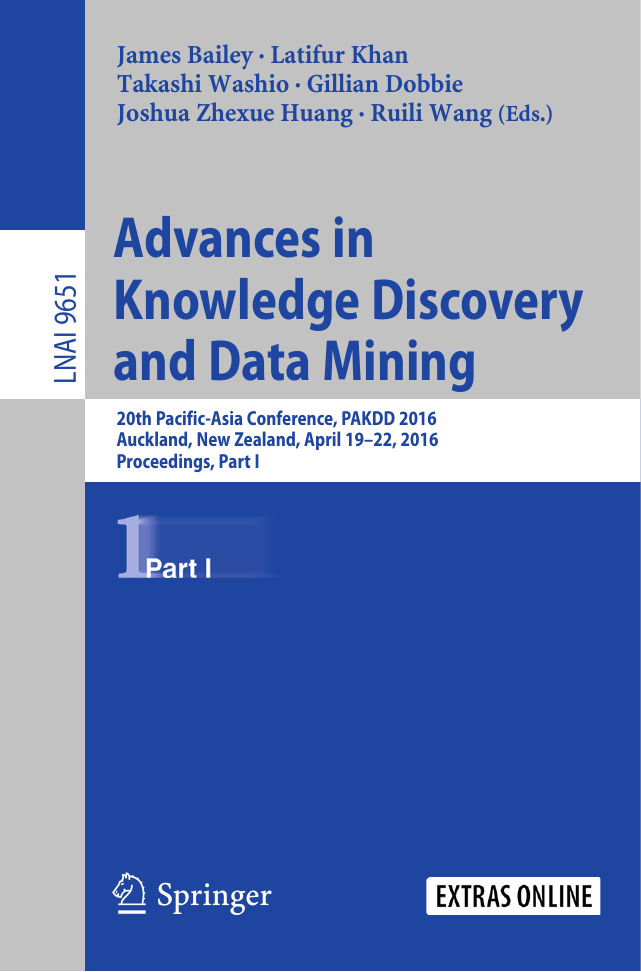
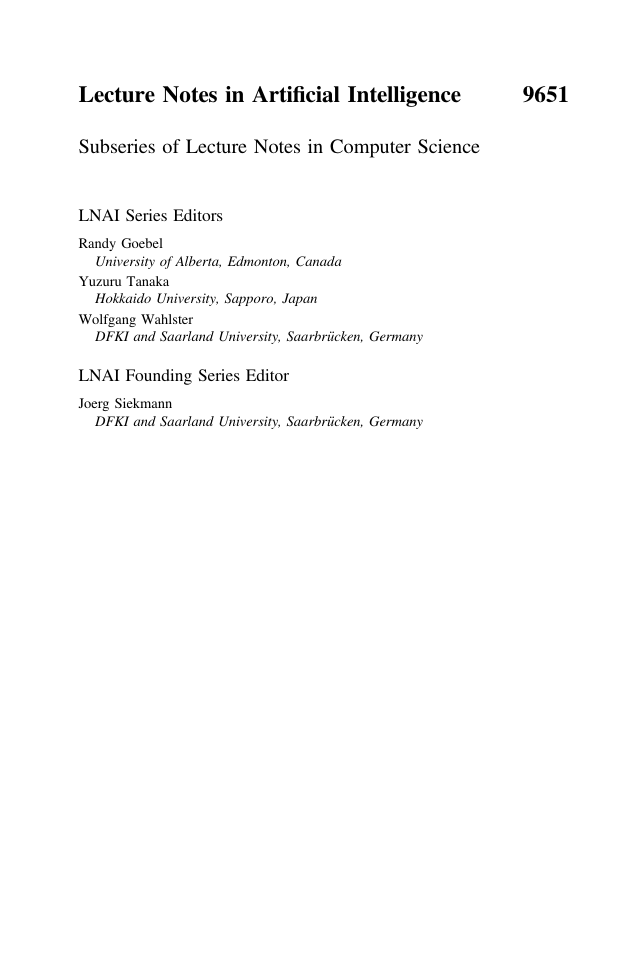

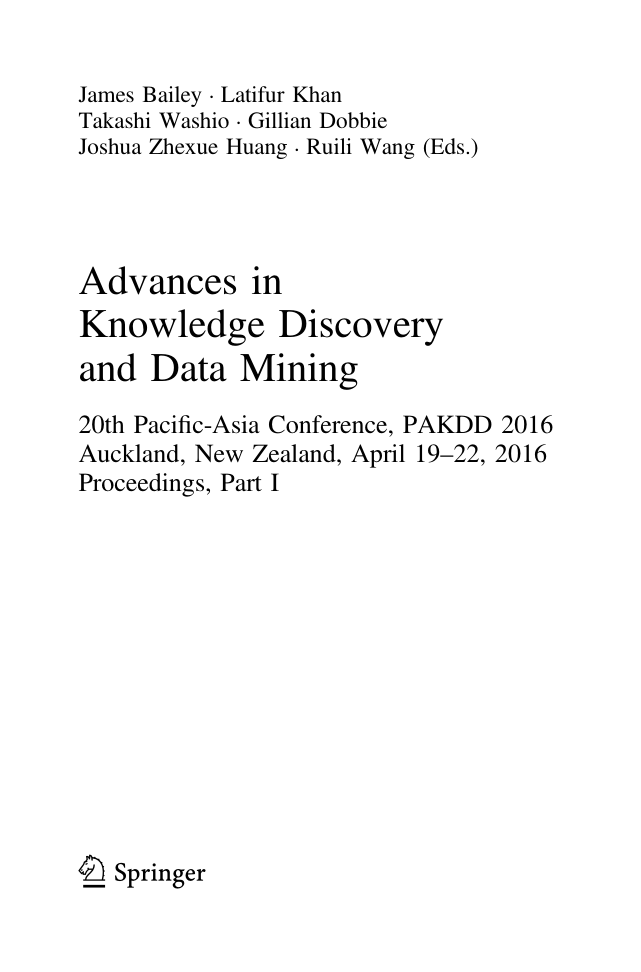
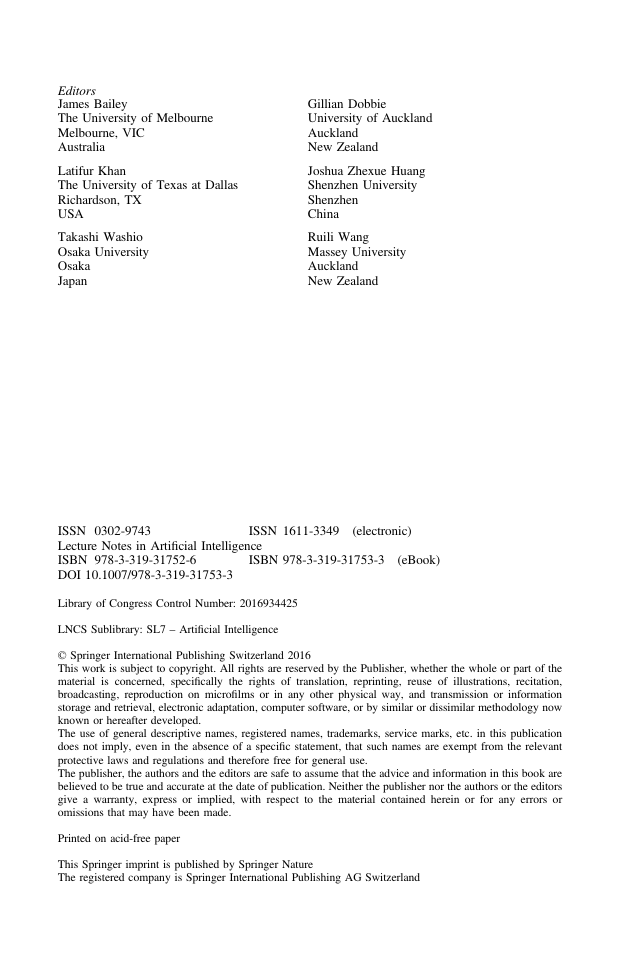

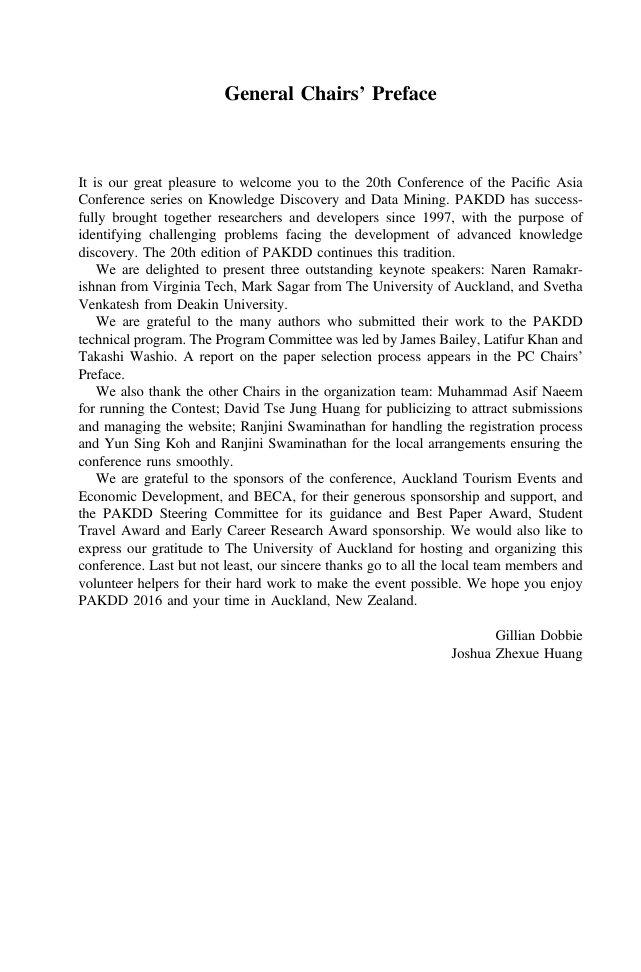
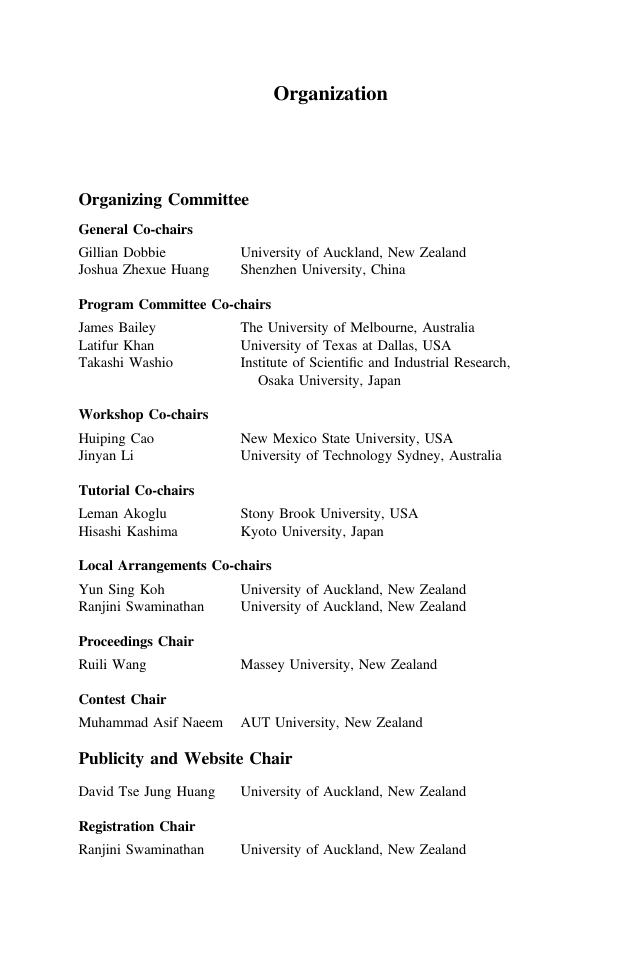








 2023年江西萍乡中考道德与法治真题及答案.doc
2023年江西萍乡中考道德与法治真题及答案.doc 2012年重庆南川中考生物真题及答案.doc
2012年重庆南川中考生物真题及答案.doc 2013年江西师范大学地理学综合及文艺理论基础考研真题.doc
2013年江西师范大学地理学综合及文艺理论基础考研真题.doc 2020年四川甘孜小升初语文真题及答案I卷.doc
2020年四川甘孜小升初语文真题及答案I卷.doc 2020年注册岩土工程师专业基础考试真题及答案.doc
2020年注册岩土工程师专业基础考试真题及答案.doc 2023-2024学年福建省厦门市九年级上学期数学月考试题及答案.doc
2023-2024学年福建省厦门市九年级上学期数学月考试题及答案.doc 2021-2022学年辽宁省沈阳市大东区九年级上学期语文期末试题及答案.doc
2021-2022学年辽宁省沈阳市大东区九年级上学期语文期末试题及答案.doc 2022-2023学年北京东城区初三第一学期物理期末试卷及答案.doc
2022-2023学年北京东城区初三第一学期物理期末试卷及答案.doc 2018上半年江西教师资格初中地理学科知识与教学能力真题及答案.doc
2018上半年江西教师资格初中地理学科知识与教学能力真题及答案.doc 2012年河北国家公务员申论考试真题及答案-省级.doc
2012年河北国家公务员申论考试真题及答案-省级.doc 2020-2021学年江苏省扬州市江都区邵樊片九年级上学期数学第一次质量检测试题及答案.doc
2020-2021学年江苏省扬州市江都区邵樊片九年级上学期数学第一次质量检测试题及答案.doc 2022下半年黑龙江教师资格证中学综合素质真题及答案.doc
2022下半年黑龙江教师资格证中学综合素质真题及答案.doc